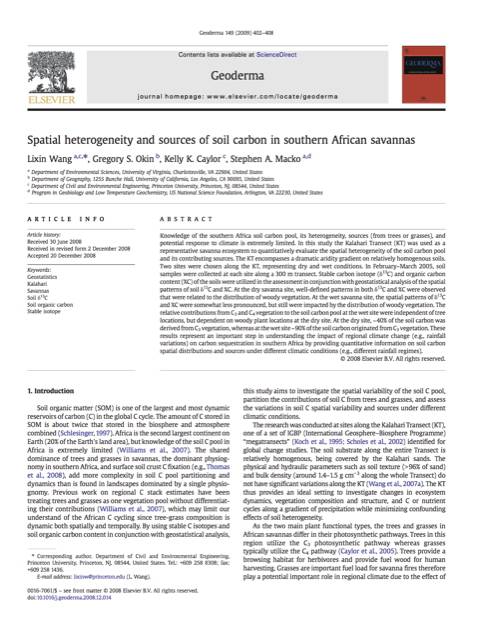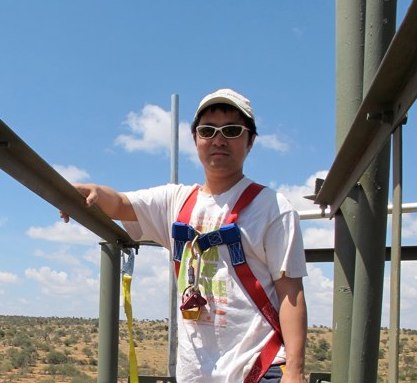Spatial heterogeneity and sources of soil carbon in southern African savannas

Wang, L., G.S. Okin, Caylor, K.K., and S. Macko (2009) “Spatial heterogeneity and sources of soil carbon in southern African savannas,” Geoderma, Vol. 149, pp. 402-408, doi:10.1016/j.geoderma.2008.12.014.
Knowledge of the southern Africa soil carbon pool, its heterogeneity, sources (from trees or grasses), and potential response to climate is extremely limited. In this study the Kalahari Transect (KT) was used as a representative savanna ecosystem to quantitatively evaluate the spatial heterogeneity of the soil carbon pool and its contributing sources. The KT encompasses a dramatic aridity gradient on relatively homogenous soils. Two sites were chosen along the KT, representing dry and wet conditions. In February-March 2005, soil samples were collected at each site along a 300-m transect. Stable carbon isotope (δ13C) and organic carbon content (%C) of the soils were utilized in the assessment in conjunction with geostatistical analysis of the spatial patterns of soil δ13C and %C. At the dry savanna site, well-defined patterns in both δ13C and %C were observed that were related to the distribution of woody vegetation. At the wet savanna site, the spatial patterns of δ13C and %C were somewhat less pronounced, but still were impacted by the distribution of woody vegetation. The relative contributions from C3 and C4 vegetation to the soil carbon pool at the wet site were independent of tree locations, but dependent on woody plant locations at the dry site. At the dry site, ~40% of the soil carbon was derived from C3 vegetation, whereas at the wet site ~90% of the soil carbon originated from C3 vegetation. These results represent a vital step in the understanding the impact of regional climate change on carbon sequestration in southern Africa savannas.
